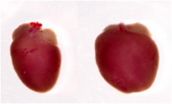(Press-News.org) URBANA – A University of Illinois scientist reports that family mealtimes that contain three ingredients in the right amounts can improve the quality of life in children who have chronic asthma.
"Family mealtimes, when they're done right, are linked to many benefits for children, including a reduced risk of substance abuse, eating disorders, and obesity. In this study, we've put these mealtimes under a microscope so we can see minute by minute which factors deliver these healthy outcomes," said Barbara H. Fiese, director of the U of I's Family Resiliency Center.
Which three ingredients make such a big difference? It's as easy to remember as ABC: action, which includes eliminating such distractions as cell phones and the TV; behavior control, which involves discipline that isn't harsh and also teaches manners; and communication that shows genuine interest and concern about what's going on in each others' lives.
And, because any good recipe is specific about the amounts of each ingredient, Fiese has issued some guidelines.
"Communication is by far the most important ingredient. The average family meal takes 18 minutes, and I'd allot about 2 minutes to action, 4 minutes to behavior control, and 12 minutes to positive communication that affirms kids' importance, helps them resolve troublesome issues, and reminds them to take their medicine or write a thank-you note," she said.
Fiese and her colleagues videotaped 200 families that included children aged 5 to 12 with persistent asthma, observing and coding their actions during family meals. Caregivers filled out a questionnaire assessing the severity of the child's symptoms, and a respiratory therapist checked the kids' lung functioning. The researchers controlled for adherence to medication.
The kids filled out a 23-item asthma-specific questionnaire assessing their quality of life, rating such items as the degree to which they worried about their symptoms and how well they were able to take part in everyday activities.
"When children were part of families that 'followed the recipe,' their asthma symptoms were less severe and they were more apt to take their medicine. They also tended to worry less about their symptoms, and they were able to engage more fully in activities at school and after school," Fiese said.
When mealtimes had more distractions, asthma symptoms were more pronounced, she said.
"In families headed by a single parent or when the primary caregiver had less education, we found that mealtimes contained more disruptions, including watching TV and talking on cell phones, and less time talking about the day's events. If there's a lot of confusion, it's hard for family members to follow conversations," she said.
Single parents and those with less education also spent more time controlling behavior and were likely to use harsher methods to restore order to the family table. It's not that being a single parent or lower levels of education cause more disruptions during mealtimes. Rather, it may be that families with fewer resources find it difficult to manage time and need more assistance, she said.
According to Fiese, children thrive on routine, and disorganized meals are related to poorer health for the children who participate in them. These children are believed to be at highest risk for poorly controlled asthma and are most likely to use the emergency room for health care.
"We need to pay attention to the chronic stress that compromises health in low-income families that have few resources," she said.
Recent research suggests that poor organization—a lot of chaos in the family environment— disrupts learning and predicts poor social and emotional development, she noted.
"Family mealtimes that follow these ABC guidelines are an important ritual that parents can use to counter that trend," she said.
###
The study was published in the January/February 2011 issue of Child Development. Co-authors are Marcia A. Winter of the University of Rochester Medical Center and Joanna C. Botti of Upstate Medical Center in Syracuse, New York. Funding was provided by the National Institutes of Health.
END
Rainer Kube and his working group report in the current issue of Deutsches Ärzteblatt International (Dtsch Arztebl Int 2011; 108[4]: 41-6) on new treatment strategies in patients with colon cancer.
The findings of multicenter observational studies are a good basis for improvements to overall quality of patient care. Against this background, from 2000 to 2004 Kube and his coauthors collected data on over 31 000 patients in 346 German hospitals. From this data pool they extracted statements about the quality of care. They discovered, for example, that colonoscopy screening ...
Compared to people in employment, men and women who are unemployed suffer more often and longer from both physical and emotional complaints. Why the un-employed should have health problems more often is discussed by Lars E. Kroll and his coauthor in the current issue of Deutsches Ärzteblatt International (Dtsch Arztebl Int 2011; 4: 47-52), along with a report on the findings of the GEDA study.
The GEDA study (Gesundheit in Deutschland Aktuell, or Current Health in Germany) was carried out in 2008-2009 by the Robert Koch Institute. The results showed that unemployed people ...
CHAPEL HILL, N.C. – Everyone knows chocolate is critical to a happy Valentine's Day. Now scientists are one step closer to knowing what makes a heart happy the rest of the year.
It's a gene called DOT1L, and if you don't have enough of the DOT1L enzyme, you could be at risk for some types of heart disease. These findings from a study led by researchers at the University of North Carolina at Chapel Hill School of Medicine appear in the Feb. 1, 2011 issue of the journal Genes and Development.
The team created a special line of mice that were genetically predisposed to ...
The first stars in the universe were not as solitary as previously thought. In fact, they could have formed alongside numerous companions when the gas disks that surrounded them broke up during formation, giving birth to sibling stars in the fragments. These are the findings of studies performed with the aid of computer simulations by researchers at Heidelberg University's Centre for Astronomy together with colleagues at the Max Planck Institute for Astrophysics in Garching and the University of Texas at Austin (USA). The group's findings, published in Science Express, ...
Things are not always what they seem when it comes to fish—something scientists at the Smithsonian Institution and the Ocean Science Foundation are finding out. Using modern genetic analysis, combined with traditional examination of morphology, the scientists discovered that what were once thought to be three species of blenny in the genus Starksia are actually 10 distinct species. The team's findings are published in the scientific journal ZooKeys, Feb. 3.
Starksia blennies, small (less than 2 inches) fish with elongated bodies, generally native to shallow to moderately ...
The vaccine for human papillomavirus (HPV) can prevent 90 percent of genital warts in men when offered before exposure to the four HPV strains covered by the vaccine, according to a new multi-center study led by H. Lee Moffitt Cancer Center and UCSF.
The four-year, international clinical trial, which also found a nearly 66 percent effectiveness in the general population of young men regardless of prior exposure to these strains, provides the first reported results of using the HPV vaccine as a prophylactic in men.
Initial data from this study informed the Food and Drug ...
NEW YORK (February 4, 2011) – Researchers at the NYU Child Study Center demonstrated that a brief program for families of Pre-Kindergarten students attending schools in disadvantaged urban communities improved children's behavior at school. The study, called "Promoting effective parenting practices and preventing child behavior problems in school among ethnically diverse families from underserved, urban communities," was published in the February 2011 issue of Child Development.
Dr. Laurie Miller Brotman and her colleagues spent several years developing ParentCorps, ...
Since the days of Darwin, the "tree of life" has been the preeminent metaphor for the process of evolution, reflecting the gradual branching and changing of individual species.
The discovery that a large cluster of genes appears to have jumped directly from one species of fungus to another, however, significantly strengthens the argument that a different metaphor, such as a mosaic, may be more appropriate.
"The fungi are telling us something important about evolution … something we didn't know," said Antonis Rokas, assistant professor of biological sciences at Vanderbilt. ...
An ambitious hunt by Johns Hopkins scientists for actively "jumping genes" in humans has yielded compelling new evidence that the genome, anything but static, contains numerous pesky mobile elements that may help to explain why people have such a variety of physical traits and disease risks.
Using bioinformatics to compare the standard assembly of genetic elements as outlined in the reference human genome to raw whole-genome data from 310 individuals recently made available by the 1000 Genomes Project, the team revealed 1,016 new insertions of RIPs, or retrotransposon ...
Researchers at Case Western Reserve University have developed a little bomb that promises a big bang for cancer patients.
Preliminary tests show an anti-cancer drug loosely attached to gold nanoparticles starts accumulating deep inside tumors within minutes of injection and can be activated for an effective treatment within two hours. The same drug injected alone takes two days to gather and attacks the tumor from the surface – a far less effective route.
The work, titled "Deep Penetration of a PDT Drug into Tumors by Noncovalent Drug-Gold Nanoparticle Conjugates," ...


